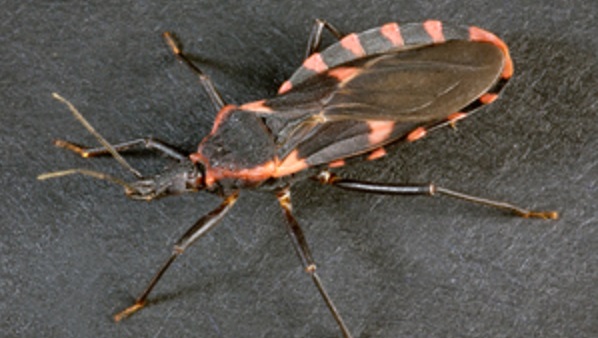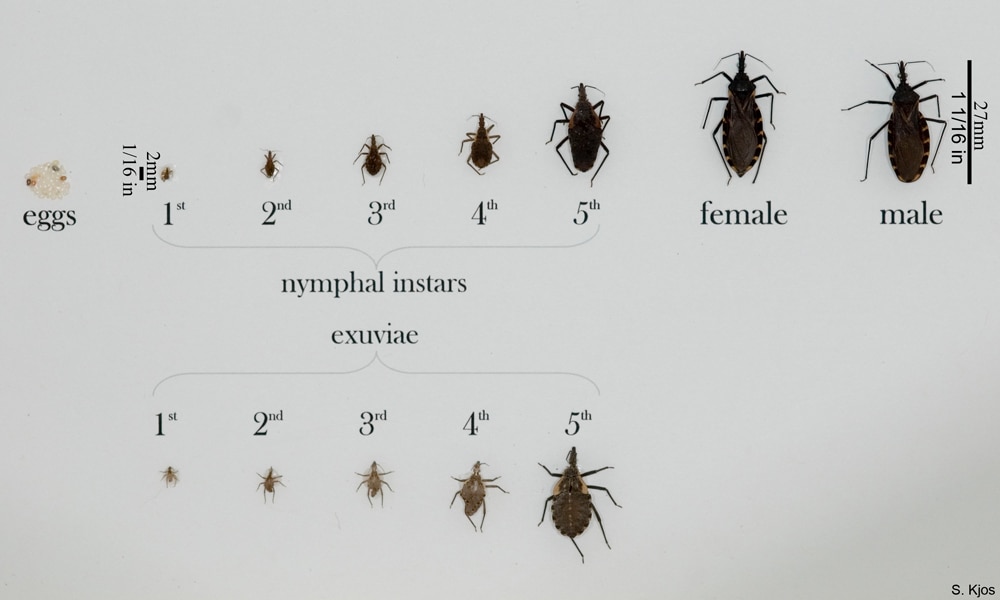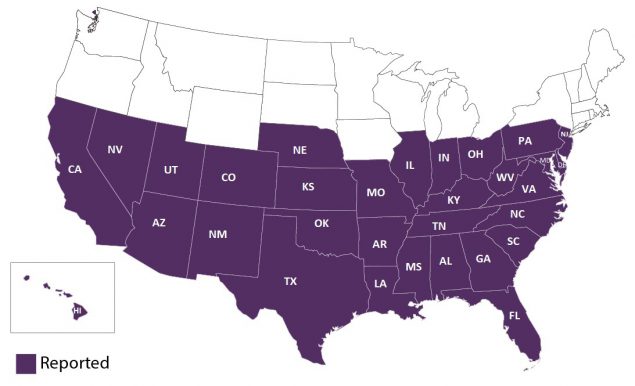Key points
- People get Chagas disease through contact with the feces (poop) of infected triatomine (kissing) bugs or accidently rubbing the feces into open wounds, eyes, or mouth.
- Chagas disease is primarily found in rural parts of continental Latin America.

How it spreads
Chagas disease can spread in several ways, including:
- Triatomine bugs, also known as kissing bugs, become infected by biting and sucking blood from animals or people carrying the T. cruzi parasite.
- Contact with bug feces: After feeding, these bugs pass the parasite in their feces. If the feces enter a person's body through a cut or near the eyes or mouth, it can cause infection.
- Accidental rubbing: Infection can occur if someone unknowingly scratches or rubs bug feces into their bite wounds, eyes, or mouth.
Although rare, you can also become infected with the parasite (T cruzi) that causes Chagas disease from:
- Mother-to-baby (congenital),
- Contaminated blood products (transfusions),
- An organ transplanted from an infected donor,
- Laboratory accident, or
- Contaminated food or drink.
Triatomine Bugs' Role in Chagas Disease Spread
Triatomine bugs, also known as kissing bugs, are key in spreading Chagas disease. These bugs:
- Hide in cracks in the walls and roof during the day.
- Come out to bite and feed on blood.
- When they feed, their infected droppings can get into bites, cuts, or mucous membranes.

Where Triatomine Bugs Live
Triatomine bugs can live both indoors and outdoors. When indoors, they might be found in cracks and holes of poorly constructed houses. Outdoors, they can live in places like:
- Beneath porches
- Between rocky structures
- Under cement
- In rock, wood, brush piles, or beneath bark
- In rodent nests or animal burrows
- In outdoor dog houses or kennels
- In chicken coops or houses
In the United States, triatomines rarely infest homes because houses are well-sealed and have plastered walls. However, finding them indoors, especially younger, wingless nymphs, may indicate an infestation. If these bugs are inside, they are often found near where pets sleep, where rodents are present, or around beds and bedrooms, especially under or near mattresses or nightstands.
Triatomine Species in the Southern United States
Triatomine bugs are typically found in the southern United States, Mexico, Central America, and South America (as far south as southern Argentina). Eleven different species of triatomine bugs have been found in the southern United States:

